| 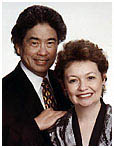 Effective
Teaching...
Effective
Teaching...
by Harry and Rosemary
Wong
April
2006
They're Eager
to Do the Assignments
Julie Johnson has been
teaching for over fifteen years and she’s never had problems
getting her students to do their assignments. How
does she do it?
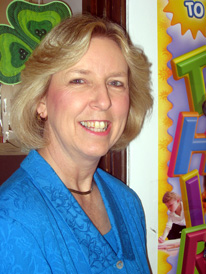
When we met Julie fifteen years ago as a kindergarten teacher
she said, "When I begin each new lesson, I decide exactly
what it is I want my students to know or be able to do.
Then I tell my students what they will be learning and how they
will show me they have learned it.
“Next I show them how to do it. We practice together
(guided practice). Then they practice on their own (independent
practice).
“And then I test them the same way we practice. In
other words, how they will be tested. This way we all know
exactly what we are learning and how we will know when and if
we have learned it.
“In my class, test is not a bad word. It is something
my students look forward to. It is their chance to show
me what they have learned. They can't wait for their turn
to be tested because after all the instruction and practice, the
test is the easiest part, at least that's what my students tell
me.
“They beg me to test them. They even stand in line
waiting for their turn to show me what they have learned.”
What is Julie Johnson doing to cause her students to
beg her to show her what they have learned?
- She decides what she wants her students
to learn.
- She shows them what they are to learn.
- They practice or do the assignment
on what they are to learn.
- They are tested on what they know
they are to learn.
As Julie says, “There are no secrets as to what is expected
of them. When I do this they all succeed.”
If students know what they are to learn,
you increase the chances that the
students will learn.
It’s like flying into a strange city, renting a car, and
driving to your destination without a map. How do you know
when you’ve arrived? Wouldn’t you have felt
more confident in your journey knowing the address, having a MapQuest®
map in your hand, or renting a car with navigation system so a
voice is coaching you along the way to your destination?
Please review Chapter 22 in The First Days of School
so we can guide you through the process of helping students to
learn.
Boredom Is a Good Sign
“I’m bored.”
A student who is bored is not a bad or lazy student. Rather,
consider it a sign that the student wants to do something stimulating,
exciting, and challenging.
It’s no different with an adult who says the program on
television is boring, the food is boring, or the relationship
is boring. Adults are always looking for a better program,
better restaurant, and better relationship.
All students know why they are in school.
They come to school to learn. They know there will be assignments.
And learning and assignments take work. The reason many
students do not do their work or their assignments is not because
they are unwilling or lazy but because they have no idea what
the assignment is. For instance, the ineffective teacher
will say:
I have them read Chapter seven.
I have them do questions five to eleven.
I have them watch this video.
I tell them to write this paper.
I give them this worksheet to complete.
These are all meaningless assignments. The students see
no purpose, no meaning, and no value to what they are to do.
What does “read Chapter seven” mean? What’s
the purpose of “watching the video”? So, why
do it! Thus, they have every right to say, “I’m
bored!”
Also, notice how the teacher keeps saying, “I, I, and I.”
The teacher orders the students to do things— meaningless
things. People of all ages rebel against doing things that
are meaningless.
Since the students can’t rebel against this kind of clueless
teaching or they will be sent to the office for insubordination,
it’s simpler for them to say, “I’m bored.”
“Bored” is a safe word to use. People can hide
behind the word. It’s a socially accepted part of
today’s jargon.
Do not take the word “bored” as an effrontery.
Rather, understand that the students want to work. They
just want to know the meaning or the purpose of the work.
That’s what is meant by “I’m bored.”
People get more things done when
they see where they are going
and what they are doing.
Take a look again at what Julie Johnson was doing. Julie’s
key sentence is, “This way we all know exactly
what we are learning and how we will know when and if we
have learned it.”
The teacher knows what she is teaching.
The students know what they are learning.
Both the teacher and the students are moving towards
the same goal. That’s when you get learning.
Teach With the End in Mind
Julie Johnson teaches with the end in mind.
She said, “When I begin each new lesson, I decide exactly
what it is I want my students to know or be able to do.”
Effective teachers keep asking the same basic question, “What
do I want them to achieve?”
Everyone needs to have a common understanding of what skill or
knowledge the students is to master.
The role of a teacher is not to cover.
Covering a chapter or a topic is meaningless. Worse yet,
the teacher does not even know what skill or knowledge student
is to master.
Therefore, stop asking the following dead end questions:
What am I going
to cover tomorrow?
What video am I going
to show?
What worksheet am I
going to give them?
What activity am I going
to do?
The teacher who “covers” only thinks about getting
across the lesson, not how best the student can learn the lesson.
They look for activities that are “fun,” “cute,”
or will “bring the class alive.” They do not consider
that these activities do not teach to any objective or standard.
They are preoccupied with what activities students will get through.
The danger is in the word “I.” The teacher is doing
all the work. The students are not responsible; they just
come to school wondering what the teacher will do next.
They have no idea what they are to learn. The teacher just
covers.
The role of a teacher is to uncover. The
effective teacher uncovers the lesson by telling the students
up front what the students are to accomplish. Julie says,
“Then I tell my students what they will be learning and
how they will show me that they have learned it. Next I
show them how to do it. We practice together. Then
they practice on their own.”
Start asking the following destination oriented question:
What is it the students
are to learn, achieve, or accomplish?
You can assess or evaluate effectively what the students have
done when both parties know what the students are responsible
for performing or learning.
Instead of thinking of what the teacher
will go over,
focus on what the students will be able to do as a result of the
lesson.
To do this, tell the students at the beginning of the assignment
what they are responsible for learning, achieving, or performing.
The role of a teacher is not to cover. The role of a
teacher is to uncover!
Teaching to Standards
Julie Johnson is teaching third grade now, but is using the same
effective strategies to deliver the instruction and get the same
student achievement results. This is because she focuses
on teaching for learning and mastery.
To do this she begins with the state standards.
Do not be alarmed by standards, because standards do
not deprive you of creativity. For instance, all
cities have standards for construction. When buying a home
you would want to know that your home was built to code, which
means that the standards for construction have been met.
However, builders and homeowners can creatively build the home
in any fashion, provided it meets specified standards. Likewise,
in the classroom, teachers can creatively construct their lessons,
provided the lessons’ objectives are in line with the state
standards. That’s common sense.
Using the Minnesota State Standards in Math, Julie aligned the
standards with her district’s adopted Math textbook.
This gave her the ability to decide which math concepts needed
to be taught first and which concepts not to teach at all.
She determined which chapters she would use and not use.
That is, the textbook was not the curriculum, the concepts that
she aligned to the state standards were her curriculum.
She didn’t “cover” the textbook. She
taught to a curriculum, a curriculum focused on student learning.
| In fact, the guidelines that accompany the Minnesota State
Standards are specifically stated: |
Teachers must develop and enrich
students’ knowledge of mathematics
beyond what is outlined in this document. |
Mastery of each concept is expected but the document does not
identify when those concepts are introduced and reinforced.
Standards are good because they give you a base point
from which to start your class lessons. You have
to begin somewhere, so what better place to start than to use
the state standards. And, you must use the state standards.
You are not in private business; you are an employee of the school
district (see page 22 in The First Days of School).
Julie began by designing the layout of the whole school year.
She decided which standards needed to be taught all year long,
such as Mathematical Reasoning.
| This is one of the Minnesota Grade Three standards: |
Apply skills of mathematical representation, communication,
and reasoning throughout the content strands.
|
With each concept she teaches, her students need to learn how
to communicate and how to evaluate and express how they are thinking
when solving a problem. On almost every worksheet accompanying
her math textbook, the students are asked to explain their answers
in words.
Since the Minnesota Comprehensive Test is mainly multiple choice,
the students must be able to READ the questions by themselves.
Thus, being able to READ the vocabulary and understand it becomes
important to teach, along with the math.
There are also four writing questions where the students have
to draw a graph or chart, or express their thinking using words.
These skills must also be taught and practiced as each concept
is taught. Students do not automatically know how to do
this.
To assist with the reading and writing, Julie has her students
bring a notebook at the beginning of each school year to use as
their Math Journal. In the back of their Math Journals,
the students write down all of the vocabulary words that are taught
with each concept.
They review these words every day.
In the front of their Math Journals, the students write
numbers in order. She has them organize each page
into four rows of 25, so that each page has 100 numbers.
As they complete each page, they show it to her and she puts a
small star at the bottom when it has been done correctly.
Julie says she is amazed at how many children have difficulty
with numbering, but this activity helps her identify those students
who need help understanding number sense.
The students work in their journals at the beginning of each
math lesson. Some students enjoy it so much they even take
their journals home to work on. One student filled two or
three notebooks and was up to 20,000, but most are lucky if they
reach 5,000 by the end of the school year.
| This is another Minnesota Math Standard in Geometry: |
Classify shapes by specified attributes.
Identify simple shapes within complex shapes.
|
| |
| These are the lesson objectives that are aligned to the
state standards: |
- Identify, describe, and classify two-dimensional shapes
according to number
and length of sides and kinds of angles.
- Identify common two- and three- dimensional shapes that
are components of
more complex shapes.
|
Julie gives the students vocabulary cards with all of the words
to label the different shapes and other vocabulary words that
relate to geometry. These cut out cards are kept in an envelope
in their “stay-at-school-folders.” At the beginning
of each math lesson, the students set the cards out on their desks.
This procedure minimizes transition time and helps everyone,
teacher and students, start the lesson right away.
| This is how Julie uses the cards. She says, |
- I teach them what each word
card is and what it looks like.
- I hold up models of a shape and
they hold up the card that identifies the models. We do
this for a few days or until I see they know them well.
- I hold up something that is real world
and they match the shape.
- I have them find something in the classroom to match
to their word cards.
|
As we use these cards, we also discuss the number of sides,
faces, angles, etc. I work on things like flips, turns,
slides, congruency, lines of symmetry, parallel lines, and angles
(right, greater than, or lesser than).
Julie continually assesses her students using the book’s
quizzes and tests, which work well for her because they best match
how the students will be assessed on the Minnesota Comprehensive
Assessments.
The Future of Standards
We have just returned from a technology conference and witnessed
how technology is used to access and track the progress of students
as they master district and state standards. This practice
isn’t just happening in one district, it is becoming norm
as exit testing is required for students to progress from grade
level to the next or receive a diploma.
At the click of a button (or two!) a student’s level of
mastery of standards can be revealed. Students can be identified
and helped before they fall through the cracks and are lost forever.
While many claim that teaching has been reduced to teaching to
the test, we contend that that is not the case. This
is teaching to an objective.
The tests are used to assess for attainment of the objectives
or concepts. Teaching is the HOW you transmit and
relate that information to your students so they CAN succeed on
the test.
The HOW is boiled down to what steps are you the teacher going
to take to make sure the students all achieve or master the objective.
| How deep are you going to teach that concept so the students
realize the objective? In the case of Julie Johnson’s
geometry lessons about shapes, do you |
- just work on the vocabulary so they know the concept?
- ask the students to draw the shapes so they comprehend
the meaning?
- have students identify that shape as it appears in objects
in the classroom?
- give students objects and ask them to sort them into
groups that are and are not the shape?
- ask the students to create a picture using the outline
of the shape?
- discuss with the students the advantages and disadvantages
of using a specific shape in the design of something common
to them?
|
A good teacher does items 1 and 2 to “teach” the
concept, a better teacher includes questions 3 and 4 in the lesson
plans, and the exceptional teacher teaches to all 6 questions
so the students have a rich experience while learning the concept.
District and State Standards guide the development of information
for students. They don’t dictate how you are to teach.
That is your mission, your quest—to unlock the potential
for learning in each student and uncover the promise of achievement
for all.
 For a printable version of this article click
here.
For a printable version of this article click
here.
Harry & Rosemary Wong products: http://www.harrywong.com/product/
Email Harry Wong: harrywong@teachers.net
Gazette Articles by Harry & Rosemary Wong:
If you spot a link that appears to be out-of-date, please alert us at webmaster@teachers.net!
- A Grateful Goodbye After 15 Years (Jun 2015)
- Love, Marriage, and Babies, Oh My! (May 2015)
- Retention Rate Is 100 Percent (Apr 2015)
- Teacher Effectiveness and Human Capital (Mar 2015)
- Training Teachers to Be Effective (Feb 2015)
- Making Deals Is Ineffective (Dec 2014 / Jan 2015)
- Retrieving and Carrying Electronic Devices (Nov 2014)
- Sharing to Succeed (Oct 2014)
- How a University Prepares Its Students (Sep 2014)
- Effective Teaching (Aug 2014)
- Your Future Is in Your Hands (June/July 2014)
- The Classroom Management Book (May 2014)
- When Students Succeed; Teachers Succeed (April 2014)
- Teaching New Teachers How to Succeed (March 2014)
- Execute and Praise (February 2014)
- Shaping a Solid Foundation (Dec 2013 / Jan 2014)
- The Most Misunderstood Word (November 2013)
- How to Start Class Every Day (October 2013)
- Prevention: The Key to Solving Discipline Problems (September 2013)
- Planning, Planning, Planning (August 2013)
- Are You THE One? (June / July 2013)
- Practical Examples That Work (May 2013)
- A Disability Is Not a Handicap (Apr 2013)
- Totally Inexcusable (Mar 2013)
- Be Proud of Public Education (Feb 2013)
- Structure Will Motivate Students (Dec 2012 / Jan2013)
- Orchestrating the Classroom (Nov 2012)
- The Lasting Impact of Instructional Coaching (Oct 2012)
- Learning, Laughing, and Leaving a Legacy (Sep 2012)
- Twenty-two, First Year, and Legit (Aug 2012)
- A Master Teacher of Teachers (June/July 2012)
- Where Going to School Means Success (May 2012)
- A Nationally Celebrated High School (Apr 2012)
- The Highest Rated School in New York City, Part 2 (Mar 2012)
- The Highest Rated School in New York City, Part 1 (Feb 2012)
- The Importance of Culture (Dec 2011 / Jan 2012)
- You Can Teach Classroom Management (Nov 2011)
- Seamless, Transparent, and Consistent (Oct 2011)
- Coaching Teachers to Be Effective Instructors (Sep 2011)
- How a Principal Creates a Culture of Consistency (Aug 2011)
- Graduation Begins in Your Classroom (June/July 2011)
- The Inspiration of a Mother (May 2011)
- How to Be an Effective Leader (Apr 2011)
- Learning Objectives: The Heart of Every Lesson (Mar 2011)
- Even Shakespeare Had Structure (Feb 2011)
- Effectiveness Defined: It's Not a Mystery (Dec 2010 / Jan 2011)
- Surviving Without a Principal (Nov 2010)
- Achieving Greatness: Locke Elementary School, Part 2 (Oct 2010)
- Teaching Greatness: Locke Elementary School, Part 1 (Sep 2010)
- Effective from the Start (Aug 2010)
- Ten Year Summary of Articles, 2000 to 2010 (June/July 2010)
- The Success of a Culture of Consistency (May 2010)
- Training Teachers to Be Effective (Apr 2010)
- Learning to Teach, Teaching to Learn (Mar 2010)
- Turning Teaching Dreams into Reality (Feb 2010)
- Dreams and Wishes Can Come True (Dec 2009 / Jan 2010)
- Success in a State Controlled School (Nov 2009)
- Inner City Is Not An Excuse (Oct 2009)
- Exceeding All Expectations (Sep 2009)
- Teachers Are the Difference (Aug 2009)
- Nine Year Summary of Articles, 2000 to 2009 (Jun/Jul 2009)
- Teachers Are the Greatest Assets (May 2009)
- The Tools for Success (Apr 2009)
- Assessing for Student Learning (Mar 2009)
- To Be an Effective Teacher Simply Copy and Paste (Feb 2009)
- The Sounds of Students Learning and Performing (Dec 2008)
- A School That Achieves Greatness (Nov 2008)
- Boaz City Schools: Professional Learning Teams (Oct 2008)
- It Was Something Close to a Miracle (Sep 2008)
- A Computer Teacher Shows the Way (Aug 2008)
- Eight Year Summary of Articles, 2000 to 2008 (Jun/Jul 2008)
- An Amazing Kindergarten Teacher (May 2008)
- Schools That Beat the Academic Odds (Apr 2008)
- Academic Coaching Produces More Effective Teachers (Mar 2008)
- Coaches Are More Effective than Mentors (Feb 2008)
- Wrapping the Year with Rap! (Dec 2007/Jan 2008)
- The Floating Teacher (Nov 2007)
- Taking the Bite Out of Assessment—Using Scoring Guides (Oct 2007)
- Ten Timely Tools for Success on the First Days of School (Sep 2007)
- First Day of School Script - in Spanish, Too! (Aug 2007)
- Seven Year Summary of Articles, 2000 to 2007 (Jun 2007)
- Effective Teachers End the Year Successfully (May 2007)
- Training Gen Y Teachers for Maximum Effectiveness (Apr 2007)
- Classroom Management Applies to All Teachers (Mar 2007)
- Students Want a Sense of Direction (Feb 2007)
- Rubrics in Two College Classes (Dec 2006/Jan 2007)
- How to Write a Rubric (Nov 2006)
- Assessing Student Progress with a Rubric (Oct 2006)
- A 92 Percent Homework Turn-in Rate (Sep 2006)
- Effective Teachers Are Proactive (Aug 2006)
- Five Year Summary of Articles (Jun 2006)
- Hitting the Bulls Eye as a Beginning Teacher (May 2006)
- They're Eager to Do the Assignments (Apr 2006)
- The Success of Special Ed Teachers (Mar 2006)
- What Teachers Have Accomplished (Feb 2006)
- Fifty Years Ago, The Legacy (Dec 2005/Jan 2006)
- The Emergency Teacher (Nov 2005)
- Classroom Management Is Not Discipline (Oct 2005)
- A Successful First Day Is No Secret (Sep 2005)
- The Most Important Factor (Aug 2005)
- Four Year Summary of Articles (Jul 2005)
- Improving Student Achievement Is Very Simple (Part 2) (Jun 2005)
- Improving Student Achievement Is Very Simple (Part 1) (May 2005)
- Never Cease to Learn (Apr 2005)
- His Classroom Is a Real Life Office (Mar 2005)
- The Power of Procedures (Feb 2005)
- The First Ten Days of School (Jan 2005)
- PowerPoint Procedures (Nov/Dec 2004)
- The Saints of Education (Oct 2004)
- How Procedures Saved a Teacher's Life (Sep 2004)
- How to Help Students with Their Assignments (Aug 2004)
- Three Year Summary of Articles (Jun/Jul 2004)
- His Students are All Certified (May 2004)
- What to Do When They Complain (Apr 2004)
- A Well-Oiled Learning Machine (Mar 2004)
- The Effective Teacher Adapts (Feb 2004)
- How to Start a Lesson Plan (Aug 2003)
- Applying for a Teaching Job in a Tight Market - Part 2 (Jun/Jul 2003)
- Applying for a Teaching Job in a Tight Market (May 2003)
- The Effective Substitute Teacher (Apr 2003)
- A First Day of School Script (Mar 2003)
- How to Retain New Teachers (Feb 2003)
- No Problem With Hurricane Lili (Dec 2002)
- A Class Size of 500 (Nov 2002)
- Effective Practices Apply to All Teachers (Oct 2002)
- Dispensing Materials in Fifteen Seconds (Sept 2002)
- How To Start School Successfully (Aug 2002)
- Teaching Procedures Is Teaching Expectations (June - July 2002)
- $50,000 to Replace Each Teacher (May 2002)
- Even Superintendents Do It (Apr 2002)
- Impossible, No Job Openings? (Mar 2002)
- A Stress Free Teacher (Feb 2002)
- A Most Effective School (Jan 2002)
- Van Gogh in Nine Hours (Dec 2001)
- The Effective Teacher Thinks (Nov 2001)
- How a Good University Can Help You (Sep 2001)
- How to Motivate Your Students (May 2001)
- How to Recognize Where You Want to Be (Apr 2001)
- What Successful New Teachers Are Taught (Mar 2001)
- A Journey of the Heart (Feb 2001)
- The Miracle of Teachers (Jan 2001)
- It's Not the Students. It's the Teacher. (Dec 2000)
- The First Five Minutes Are Critical (Nov 2000)
- How to Start a Class Effectively (Oct 2000)
- The Problem Is Not Discipline (Sep 2000)
- There Is Only One First Day of School (Aug 2000)
- Applying for Your First Job (Jul 2000)
- Your First Day (Jun 2000)
Browse through the latest posts from the Classroom Management
Chatboard...
|




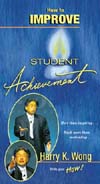

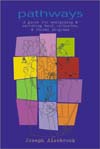


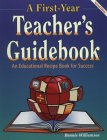
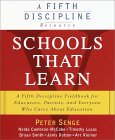

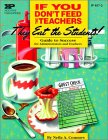
 Effective
Teaching...
Effective
Teaching... 